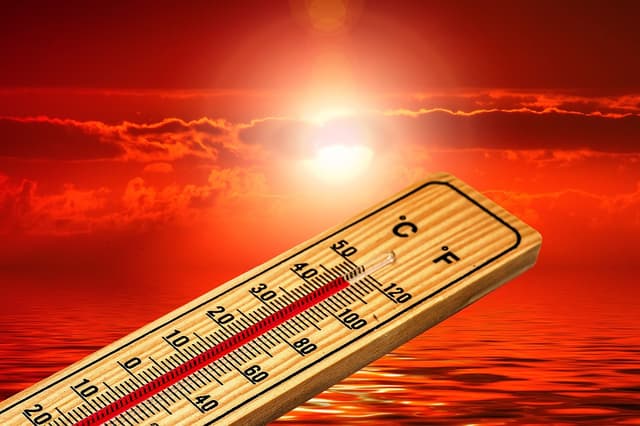Myths about teaching can hold you back
- Year 4
Writing a poem about the heat
I can write and revise my poem about the heat
- Year 4
Writing a poem about the heat
I can write and revise my poem about the heat
These resources will be removed by end of Summer Term 2025.
Switch to our new teaching resources now - designed by teachers and leading subject experts, and tested in classrooms.
These resources were created for remote use during the pandemic and are not designed for classroom teaching.
Lesson details
Key learning points
- A tanka is a traditional Japanese form of poetry that originated more than 1,300 years ago.
- Tankas often explore themes of nature, emotions and the passage of time.
- When editing tankas, we can consider the specificity of our language choices.
- Editing word choices and phrases can help to improve the imagery and impression created by our poems.
- Reading your poem aloud will help you to revise and refine it.
Keywords
Tanka - a form of Japanese poetry consisting of five lines with a specific syllable pattern (5-7-5-7-7), often expressing emotions, observations or narratives
Editing - the process of improving writing to improve text flow and overall quality
Common misconception
Pupils may find it challenging to generate rhyming words associated with the heat.
Pupils could work in partners, or as a whole class, to create a list of rhyming words.
To help you plan your year 4 English lesson on: Writing a poem about the heat, download all teaching resources for free and adapt to suit your pupils' needs...
To help you plan your year 4 English lesson on: Writing a poem about the heat, download all teaching resources for free and adapt to suit your pupils' needs.
The starter quiz will activate and check your pupils' prior knowledge, with versions available both with and without answers in PDF format.
We use learning cycles to break down learning into key concepts or ideas linked to the learning outcome. Each learning cycle features explanations with checks for understanding and practice tasks with feedback. All of this is found in our slide decks, ready for you to download and edit. The practice tasks are also available as printable worksheets and some lessons have additional materials with extra material you might need for teaching the lesson.
The assessment exit quiz will test your pupils' understanding of the key learning points.
Our video is a tool for planning, showing how other teachers might teach the lesson, offering helpful tips, modelled explanations and inspiration for your own delivery in the classroom. Plus, you can set it as homework or revision for pupils and keep their learning on track by sharing an online pupil version of this lesson.
Explore more key stage 2 English lessons from the Poetry inspired by weather unit, dive into the full primary English curriculum, or learn more about lesson planning.

Equipment
Licence
Prior knowledge starter quiz
6 Questions
Q1.Which of the following words can be associated with heat?
Q2.Which of the following are examples of poetic devices?
Q3.What is the correct syllable structure for a tanka?
Q4.Match each word class to the correct example.
ignite, bake
scorching, boiling
inferno, furnace
Q5.Which word best describes the following image?

Q6.Which is the most suitable example of the word relentless?
Assessment exit quiz
6 Questions
Q1.Match the keywords to their definitions.
a form of Japanese poetry, with a specific syllable structure
the process of improving writing to improve text flow and quality
describing a non-living thing as if it is a person


